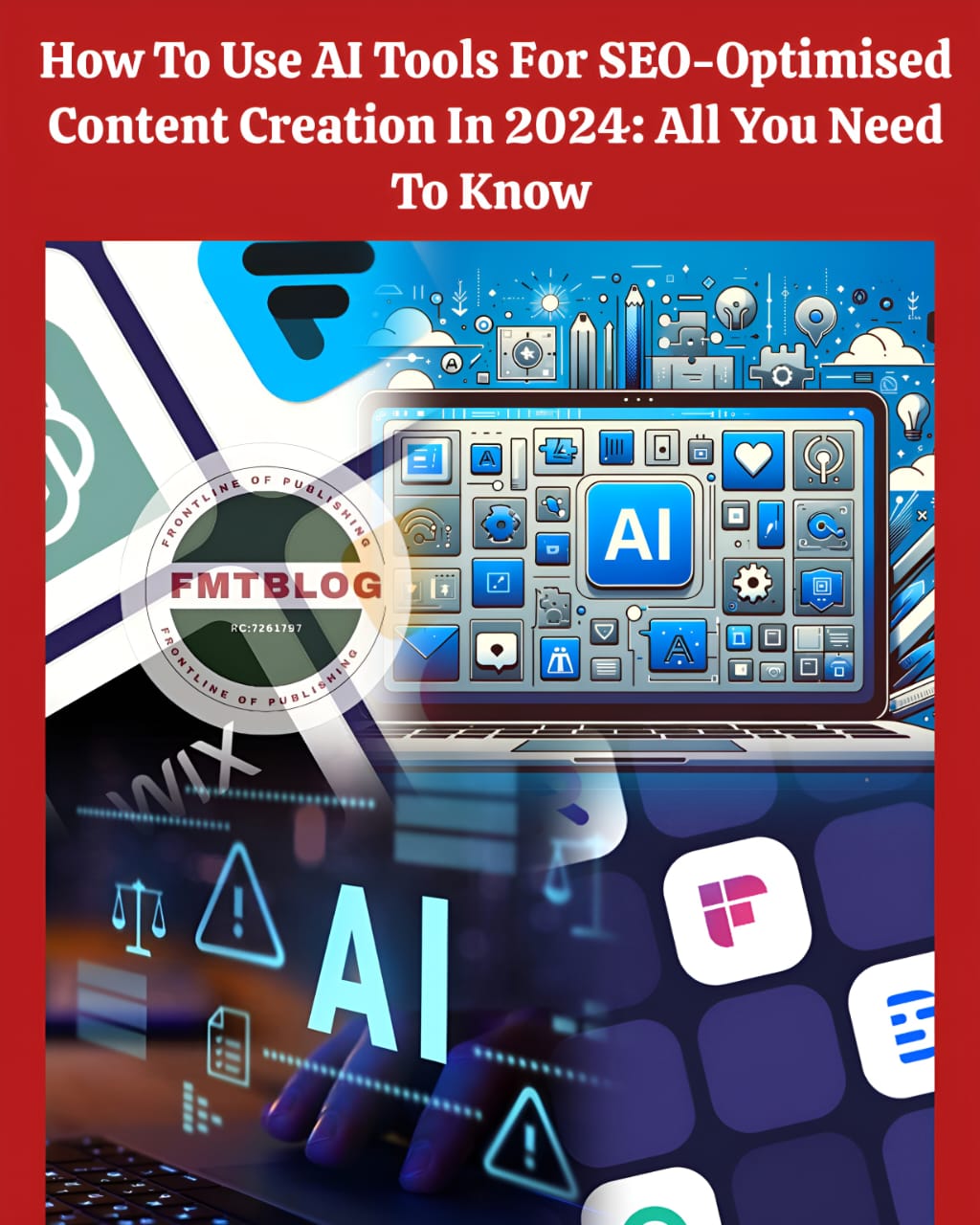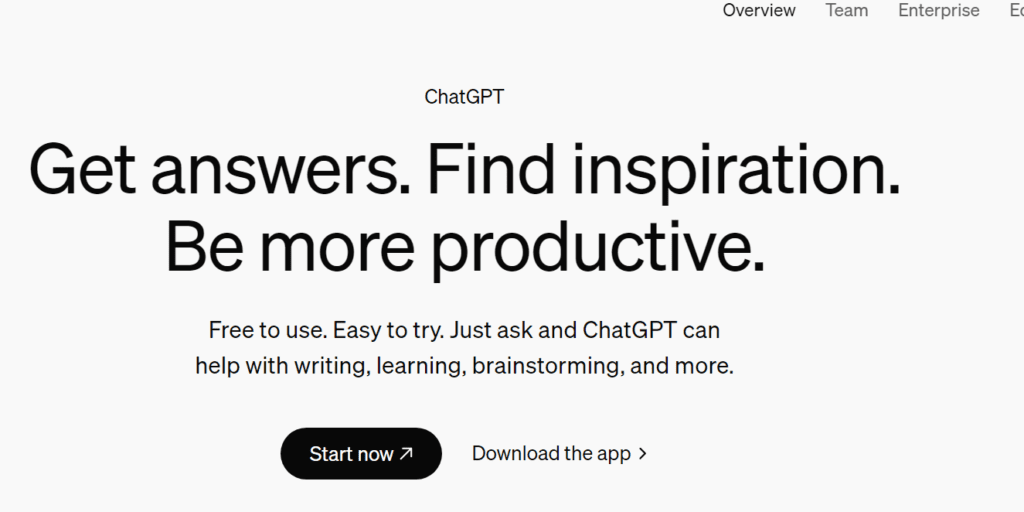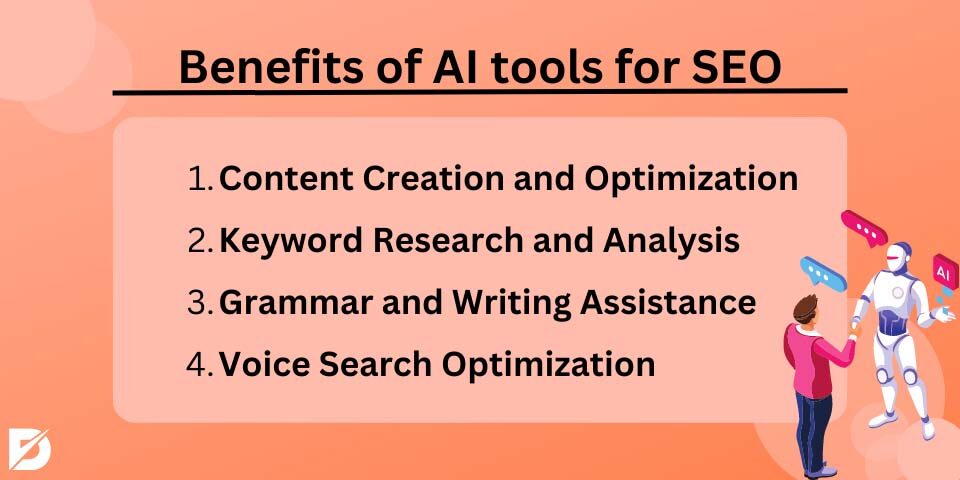
Content creation can be time-consuming and arduous, especially when figuring out, researching, writing, and SEO-optimising content in the same session.

Whether you are a content marketer, SEO expert, or blogger, writing high-quality, engaging, and optimized content is always your priority.
However, here’s the good news: AI tools have helped make content creation much quicker, smarter, and more efficient.
In this blog, we’ll show you all the options for using AI tools for content creation. You’ll also learn how to apply these tools to achieve SEO goals and create a streamlined content strategy. Let’s learn how you can leverage artificial intelligence to make better work.
Why Use AI Tools for Content Creation?
AI tools aim to streamline the content creation process without degrading the quality. The following are some of the main advantages of AI-based tools:
• Save Time: automate keyword research, proofreading, or SEO tasks.
• Enhance Quality: Improve readability and interaction with suggestions on rephrasing and structuring content.
• Achieve SEO Objectives: Add keywords without breaking and fill metadata with AI-driven SEO suggestions.
• Idea Spark: AI-based platforms may provide ideas, headlines, or content structure suggestions to start you off.
• Increase Productivity: Focus on creativity and strategy and let the AI do the tedious work.
Top-Rated AI Tools for All Content Creation Stages
All stages of content creation (research, writing, editing, and optimisation) can benefit from AI capabilities. Here, we’ll review some tools to ensure you create great content efficiently.
1. AI Writing Assistants
AI writing tools like Jasper or ChatGPT are a blessing when brainstorming, putting together articles, and creating content. They produce human-like sentences using sophisticated natural language processing (NLP).

• Create blog post headings by typing a simple prompt or idea.
• Use them to write the first draft of your piece and then tweak and customise it.
• Play around with tone tweaks, whether you’re targeting conversational, professional, or persuasive material.

Example tool recommendation:
• Jasper generates articles, email copy ideas, or headline variations based on a single prompt. Businesses love blogging with Jasper due to its SEO-friendly templates.
2. SEO Optimization Tools
When it comes to content that can be SEO-optimised, the key is combining content and SEO techniques. Tools such as Surfer SEO or Yoast SEO allow you to format your drafts to suit SEO standards.
How to Use These Tools:
• Surfer SEO: Check your drafts for readability, keyword count, proper length, and more.
• Use Yoast SEO (a WordPress plugin) to optimise live content-by-content with recommendations for title tags, meta descriptions, and internal links.
• Find and incorporate highly searched keywords for your audience using tools such as SEMrush or Ahrefs.
Example tool recommendation:
• Surfer SEO analyses content and generates data-based article briefs by pulling content suggestions from leading pages. Perfect for competitive industries!
3. Grammar and Style Checkers
You might have an engaging piece, but misspellings, incomprehensible language, or a lack of consistent flow are enough to turn readers off. Grammar checkers like Grammarly or ProWritingAid can enhance the quality of your text by identifying grammar errors and introducing more tone.
How to Use These Tools:
• Grammarly detects grammatical and punctuation errors within seconds.
• Utilise tone suggestion features to achieve brand consistency.
• ProWritingAid: for full grammar diagnosis, style recommendations, and plagiarism report.
Example tool recommendation:
• Grammarly Premium corrects mistakes and provides stylistic guidance based on your content intent.
4. AI-Powered Image Generators
AI isn’t only for words—apps such as Canva and MidJourney make creating high-quality graphics to complement your posts easy. Visuals influence your visitors’ reactions, which makes your content unique in an increasingly competitive market.
How to Use These Tools:
• Design your banners, infographics, or social media icons on Canva.
• Use MidJourney or DALL-E to visualise specific, unique visual concepts instantly.
• Sync your imagery with branding by having AI suggest complementary colours or fonts.
Example tool recommendation:
• Canva Pro includes multiple editable templates, stock photos, and colour-matching options to have professional-looking assets at your fingertips.
5. Content Personalization Tools
Personalising your content isn’t just a bonus but a requirement to create a strong relationship with your readers. Machine learning solutions like HubSpot or Outgrow enable you to personalise content according to user data and behaviour.
How to Use These Tools:
• Create blog content that updates based on the user’s location, likes, or dislikes.
• Design interactive quizzes, polls, or calculators to encourage users to interact and get insights from their audiences.
Example tool recommendation:
• HubSpot CRM incorporates AI into your content strategy with data-driven suggestions for custom CTAs and landing pages.
SEO-Driven Content Creation with AI
You need great content, but it won’t make a difference to your target audience if people don’t find it. How can AI tools be used specifically to make your content SEO-friendly?
1. Conduct Smart Keyword Research
AI-driven tools such as SEMrush or Ahrefs automate keyword research. They analyze the search intent, keyword complexity, and gaps to show you what keywords to focus on.
2. Optimize for Voice Search
With virtual assistants like Siri and Alexa, voice search is still gaining momentum. AI tools such as AnswerThePublic will be able to show you how to focus your content on long-tail keywords that align with voice queries.
3. Automate Meta Content Creation
Meta titles and meta descriptions are often dull to write. Machine-learning tools like Frase.io or Outwrite produce optimised meta content containing keywords and driving clicks.
4. Track Performance with AI Analytics
Keep an eye on how your content holds up once it is published with the help of AI analytics tools such as Google Analytics 4 and HubSpot Insights. Such systems use AI-generated predictions to determine page views, bounce rates, and conversions and suggest improvement actions.
• Blends: Combine tools at different phases of content creation to achieve optimal performance.
• Be Human: AI is great, but don’t forget the human edit part. Add personality, narrative, and context that is emotionally satisfying to your audience.
• Keep Up To Date: AI is constantly evolving. Keep up to date on the new improvements and upgrades to your tools.
The Digital Content Future of AI?
AI-powered components are not merely an add-on but part of a content marketing success strategy. Because they simplify and generate creativity, AI empowers marketers and content creators to prioritise high-value work, such as creativity and strategy, over mundane tasks.
You’ll increase your productivity and make your content engaging, targeted, and search engine-friendly by incorporating AI technology into your content creation workflow.
JOIN THE CONVERSATION→ Telegram | X/Twitter | Facebook | WhatsApp|WhatsApp Channel|Mobile App|Instagram
Let the power of AI be used in content production today. You can use Jasper, Grammarly, and Surfer SEO tools to change your output. Be prepared now, and embrace the future of content production.



